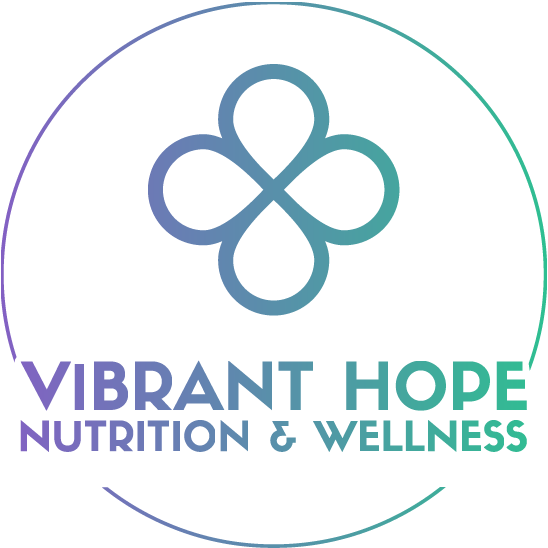Defining Normal Eating and the Hunger-Fullness Scale
Welcome!
We are so excited to share our new blog with you! We hope our posts will be a helpful resource for you to learn about the latest in nutrition research, summaries and reviews of books we recommend, as well as recipes, tools, encouragement, humor, compassion, and tips to help you navigate your nutrition journey! To start this off, I wanted to introduce a pretty basic concept that may be well known to some, but is a cornerstone of how we at JR Dietetics view food and nutrition.
This concept is called “normal eating.” Ellyn Satter, a registered dietitian and psychotherapist who specializes in eating, childhood feeding, and eating disorders, made this term famous in 19831 and it remains well known to this day. Here is Ms. Satter’s famous definition of normal eating:
“Normal eating is going to the table hungry and eating until you are satisfied.
It is being able to choose food you enjoy and eat it and truly get enough of it – not just stop eating because you think you should.
Normal eating is being able to give some thought to your food selection so you get nutritious food, but not being so wary and restrictive that you miss out on enjoyable food.
Normal eating is giving yourself permission to eat sometimes because you are happy, sad or bored, or just because it feels good.
Normal eating is mostly three meals a day, or four or five, or it can be choosing to munch along the way.
It is leaving some cookies on the plate because you know you can have some again tomorrow, or it is eating more now because they taste so wonderful.
Normal eating is overeating at times, feeling stuffed and uncomfortable. And it can be undereating at times and wishing you had more.
Normal eating is trusting your body to make up for your mistakes in eating.
Normal eating takes up some of your time and attention, but keeps its place as only one important area of your life.
In short, normal eating is flexible. It varies in response to your hunger, your schedule, your proximity to food and your feelings.”
© Copyright 2018 by Ellyn Satter published at EllynSatterInstitute.org.
Not much more needs to be said after this! We hope as you read it, maybe for the first time or for the 1,000th time, you felt empowered to give yourself a little more grace when it comes to eating. It’s completely cliché to say that nobody’s perfect, but really nobody’s perfect, especially when it comes to nutrition. In fact, because each body is unique, there is no “perfect” way to eat. I think it’s safe to say that we can all relate to each statement in Satter’s definition.
Now, I’m not going to suggest that some people don’t truly struggle in some of these areas more than others, and I think in some cases, we need help to shift our habits and focus when it comes to food for our health and wellbeing. That is where we as your registered dietitians come in! Most likely, the vast majority of us have felt some shame surrounding our eating habits at one point or another, but there is absolutely no need to feel this way! However, if some of these normal eating patterns morph into unhealthy situations, it is okay to seek out professional help from a licensed therapist and/or a registered dietitian like us.
I think one of the most simple and easily brushed aside lines is the very first, “Normal eating is going to the table hungry and leaving when you are satisfied.” Let’s be honest, how often does that happen for you? Maybe that isn’t something you really struggle with, but for those who find it difficult at times to listen to their own hunger cues, I wanted to give you a simple tool to become more sensitive to your body’s hunger/satisfaction level. It’s called the “Hunger-Fullness Scale.”
What I want you to do is picture a number line from one to 10, where number one is “I’m so hungry I could eat a horse” and 10 is “I am so stuffed I feel like I could burst.” At a one, you might be experiencing symptoms of dizziness, irritability (I like to call this “hangry”), shakiness, and frequent, intense hunger pangs. Number 10 would be when you are feeling completely stuffed and sluggish like right after feasting on Thanksgiving dinner. Number 5 would be neutral, or neither hungry nor full, and you might be hungry enough to eat a meal in the next couple of hours, or maybe a small snack in 15 minutes.
I would say it’s best for people to try to stay within the “happy zone” of three to a seven or eight most of the time. A three means you’re hungry enough for a meal, but you are not yet to the “hangry” stage. A seven or even an eight typically means you just ate a meal or snack and are completely satisfied, but not stuffed. Eating to a seven can also mean you are comfortable going three or four hours without eating. Now, as you may have put together after reading the definition of normal eating, it would be normal to go below a three or above a seven, but to help maintain a healthy balance and begin to understand your unique feelings of hunger and satiety, the hunger-fullness scale can be a very useful tool! Hopefully it helps you make small, positive changes in the way you nourish your body and listen to what it needs.
Keep climbing friends! We’re in this together!
References:
Ellyn Satter Institute. Who We Are. Ellyn Satter Institute. https://www.ellynsatterinstitute.org/how-to-eat/adult-eating-and-weight/. Accessed February 12, 2019
Ellyn Satter Institute. Adult Eating and Weight. Ellyn Satter Institute. https://www.ellynsatterinstitute.org/who-we-are/#about. Accessed February 12, 2019
